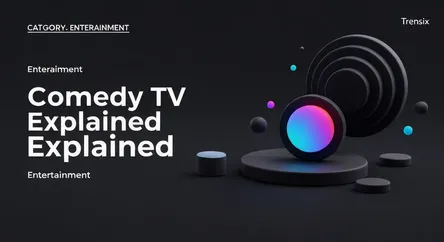Entertainment
Comedy TV Explained

Explore the world of comedy TV shows, from classic sitcoms to modern satires. Learn why these series are trending and how they shape our culture.
What is it?
A comedy TV show is a genre of television programming designed primarily to make audiences laugh. Rooted in traditions of theater and radio, TV comedies encompass a wide range of formats and styles. The most recognizable is the sitcom (situational comedy), which typically features a recurring cast of characters in humorous situations. Other popular sub-genres include sketch comedy, which consists of short, unrelated comedic scenes; satire, which uses humor and irony to critique societal issues; and dramedy, a hybrid form that blends comedic elements with more serious dramatic plotlines. These shows often rely on witty dialogue, physical comedy, and relatable or absurd scenarios to entertain viewers.
Why is it trending?
Comedy TV remains a dominant and ever-evolving genre due to its universal appeal as a form of escapism. In a fast-paced world, audiences seek out shows that offer laughter and relief. The explosion of streaming platforms has fueled a new golden age of television comedy, providing a space for diverse voices and experimental formats that cater to niche audiences. Viral moments, memes, and short clips shared on social media platforms like TikTok and Instagram constantly propel scenes and entire shows into the cultural zeitgeist, creating new fanbases and sustaining their popularity.
How does it affect people?
Beyond simple entertainment, comedy TV significantly impacts society and individual well-being. Laughter is a proven stress-reliever, and watching a favorite comedy can offer comfort and a mental break. These shows often create a sense of shared cultural experience, giving people common touchstones to discuss and bond over. Furthermore, comedy frequently serves as powerful social commentary. By packaging complex topics—such as politics, race, and relationships—in humor, writers can make them more accessible and encourage critical thinking and dialogue among viewers, subtly shaping public opinion and challenging established norms.